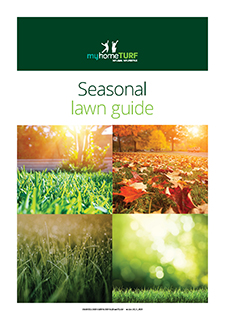Is it Okay to Fertilise Your Lawn After Mowing?
A beautiful, lush lawn is a source of pride for many homeowners. It not only adds to the aesthetics of your property, but also provides a functional space for outdoor ...

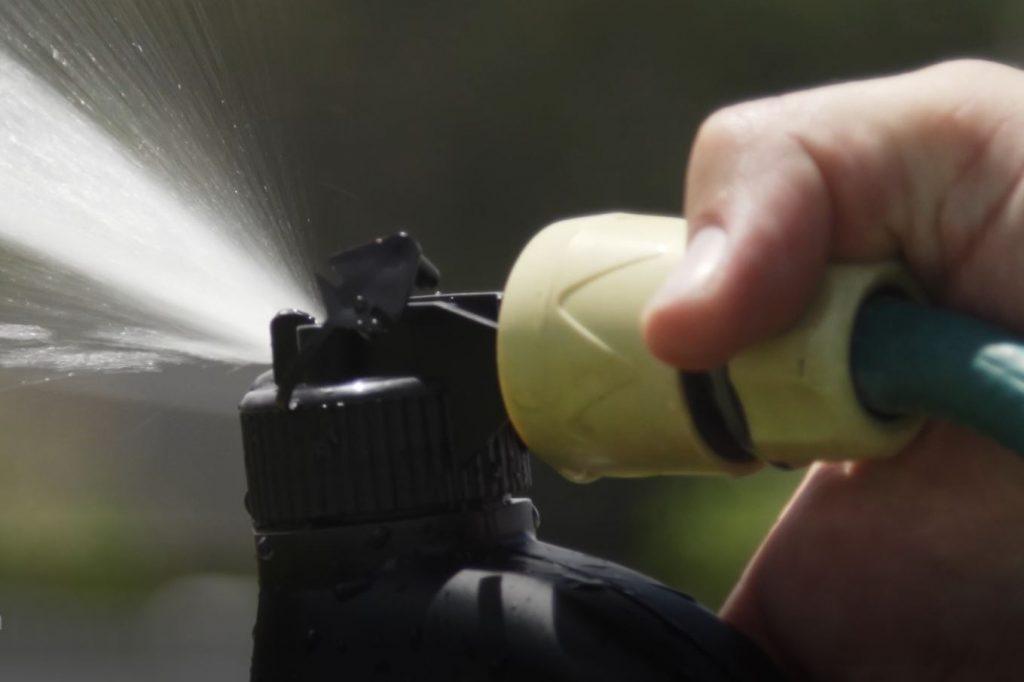 There are two different ways to apply fertiliser to your lawn – liquid or granular. Liquid and granular fertilisers can both provide your lawn with similar nutrients (nitrogen, phosphorus and potassium), they just apply them in different ways.
There are two different ways to apply fertiliser to your lawn – liquid or granular. Liquid and granular fertilisers can both provide your lawn with similar nutrients (nitrogen, phosphorus and potassium), they just apply them in different ways.
Liquid fertilisers can either come in a bottle ready-to-use or in concentrated form.
Bottle liquid fertilisers can be easily applied by connecting directly to your hose and spraying onto the lawn.
Soluble concentrate liquid fertilisers must be mixed with the required amount of water and sprayed onto your lawn. The amount applied can be calculated and the feed is distributed evenly using a sprayer. Be sure to always use the appropriate Personal Protected Equipment (PPE) when using the product.
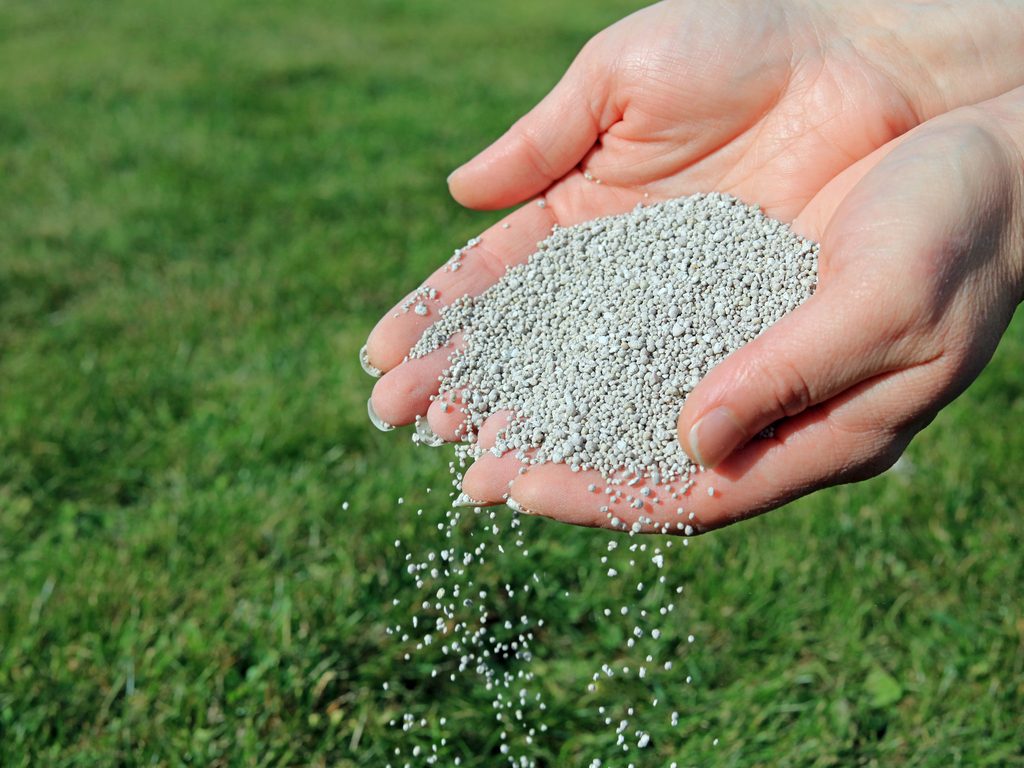 Granular fertilisers consist of small, solid grains of fertiliser mix which are manufactured into round, easy flowing particles.
Granular fertilisers consist of small, solid grains of fertiliser mix which are manufactured into round, easy flowing particles.
The granules of granular fertiliser are stored in buckets or bags and with the use of a hand or push spreader can evenly be spread across your lawn. The granules break down upon contact with water and degrade into the soil, releasing their nutrients gradually to the plant roots.
Below we address the benefits and drawbacks of using either liquid fertiliser or a slow-release granular fertiliser. Find out which one best suits your lawn or, if you see the benefits in them both!
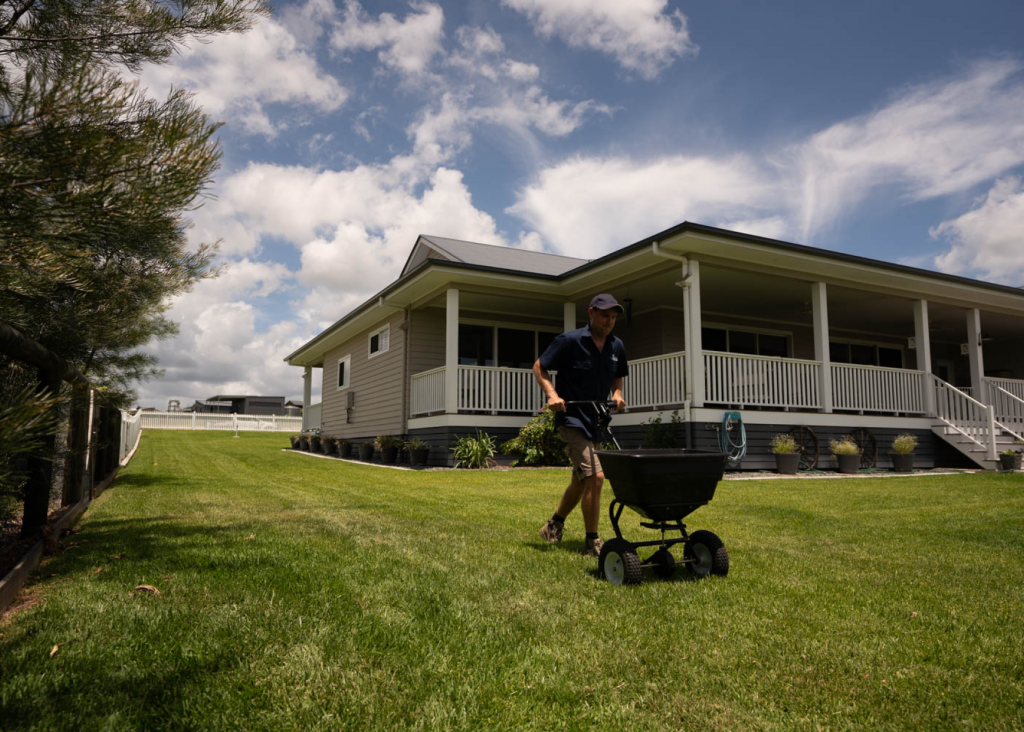 Granular lawn fertiliser is fertiliser known as dry pellets or solid fertiliser, and as a solid, this fertiliser is spread onto your lawn.
Granular lawn fertiliser is fertiliser known as dry pellets or solid fertiliser, and as a solid, this fertiliser is spread onto your lawn.
Granular fertilisers are slow-release meaning they first must break down and dissolve in water in the soil before the lawn absorbs the feeding benefits.
Most importantly, granular fertilisers contain slow-release nitrogen which provides effective greening-up of your lawn as well as extended feeding.
Therefore due to their slow-release, granular fertilisers are also good for feeding lawns prior to spring growth, at the end of the growing season, and even mid-winter depending on the type of grass you have planted.
Granular fertilisers are easy to apply with either a hand or push spreader and are popular in areas that receive a lot of sun, or in hot climates as they don’t collect on the leaf foliage and cause burning.
In fact, granular fertilisers can be applied at any time of the day or year.
The use of granular fertilisers at low application rates also means you save money as they only need to be applied up to three times a year (twice in spring and once in autumn).
Granular fertilisers can range in price – you can pay $27 for a 4kg bucket or $88 for a 20kg bag.
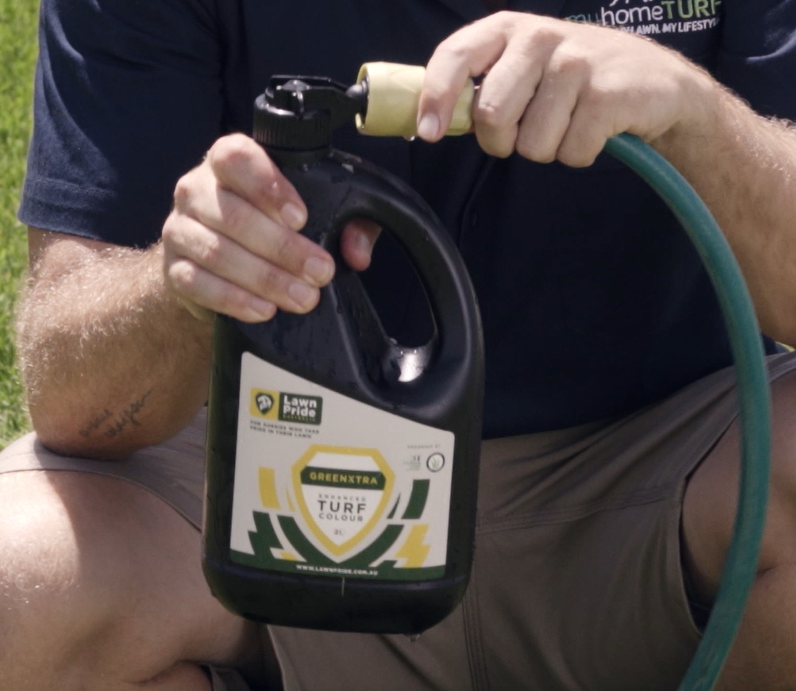 Liquid fertilisers are the fast response fertilisers – they deliver a quicker response from your lawn as the nutrients are immediately absorbed through to the leaves and roots, stimulating growth and vigour.
Liquid fertilisers are the fast response fertilisers – they deliver a quicker response from your lawn as the nutrients are immediately absorbed through to the leaves and roots, stimulating growth and vigour.
Liquid fertilisers are also commonly known as a ‘quick fix’ as they offer nutrients that provide for a rapid green-up of your lawn.
They are also able to provide a consistent application of nutrients as the components are suspended within a viscous form, which can be applied in an even manner. This means that all parts of your lawn receive the same amount of fertiliser.
Liquid fertilisers can be applied by applying the bottle to your hose, or if you use a concentrate product you need to use a spray applicator with the appropriate Personal Protective Equipment (PPE).
They need to be applied carefully when conditions are hot, usually in evening, to avoid burning leaf foliage.
As the nutrients in liquid fertilisers quickly reach your lawn’s leaves and roots, they are absorbed faster and need to be applied more often for the desired results. More frequent application of liquid fertilisers, in the long term, can be more costly.
Liquid fertilisers can range from $22 for a 2L bottle to about $47 for a 5L concentrated bottle.
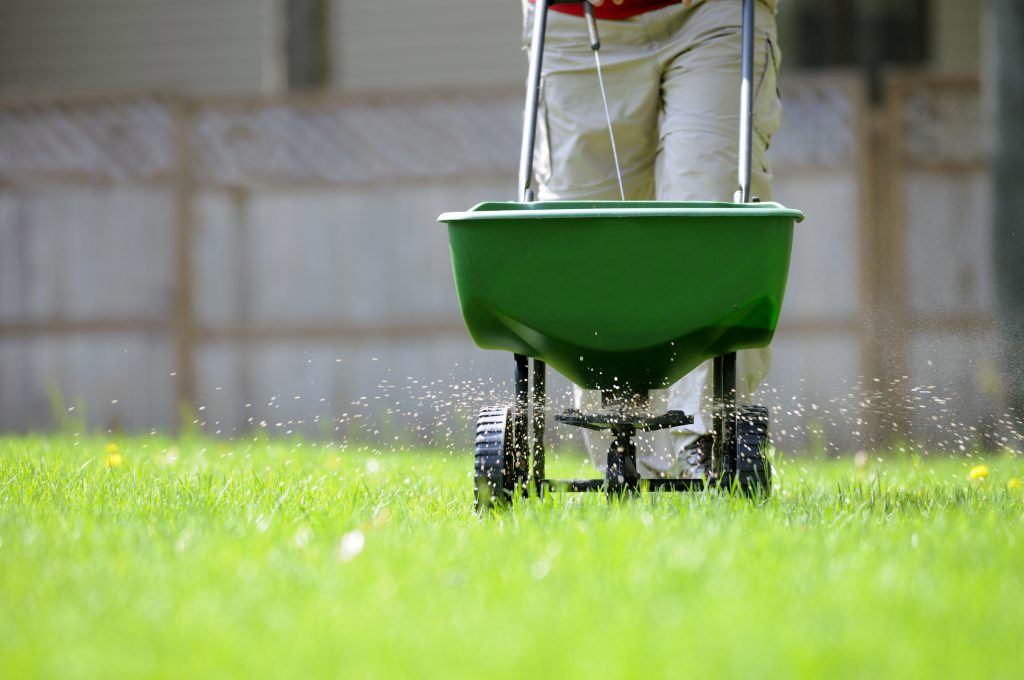 At first glance, it may seem that liquid feeds are better for your lawn due to their instant results. However, granular lawn feeds last a lot longer also making them attractive.
At first glance, it may seem that liquid feeds are better for your lawn due to their instant results. However, granular lawn feeds last a lot longer also making them attractive.
Often lawn lovers choose to use granular slow-release fertiliser about three to four times a year to maintain good lawn health for extended periods. But a liquid fertiliser can be incorporated into the lawn maintenance program to provide a quick feed and green-up during the year (say summer) when required.
If you don’t mind feeding your lawn regularly, you will get good results with liquid feeds. Otherwise, stick to granular lawn feeds.
Whether you choose liquid or granular slow-release fertilisers for your lawn treatment, be sure to always read the label and apply according to the instructions.
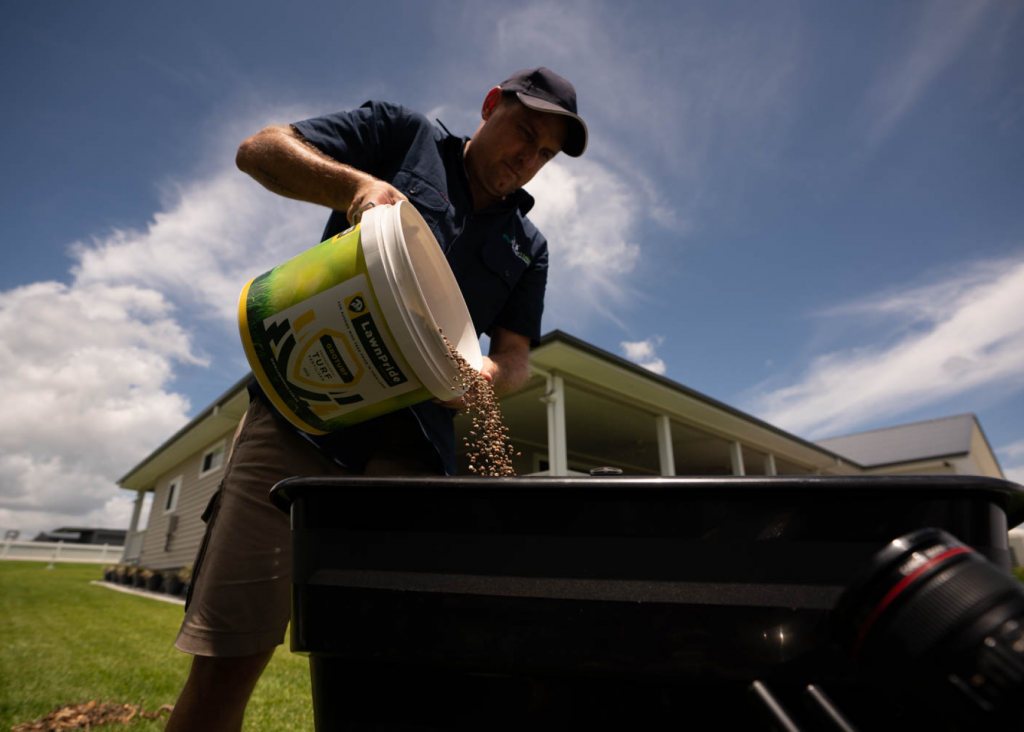 In short, there are three main elements required to properly feed and fertilise your lawn effectively and efficiently, they are: Nitrogen, Potassium and Phosphorus.
In short, there are three main elements required to properly feed and fertilise your lawn effectively and efficiently, they are: Nitrogen, Potassium and Phosphorus.
So, before choosing the best fertiliser you must understand what these three elements do:
Nitrogen (N) – gives your lawn its rich, green colour and creates strong, sturdy leaves.
Potassium (K) – works with N to make the roots and foliage stronger. It gives your lawn a greater chance of resisting drought, wear and tear as well as pests and diseases.
Phosphorus (P) – works underground making your lawn’s roots strong, especially heading into winter.
A good quality fertiliser contains all the main elements (NPK) that your lawn requires and is suitable for your lawn type.
Good quality fertilisers can either be liquid or granular depending on your budget and lawn’s requirements.
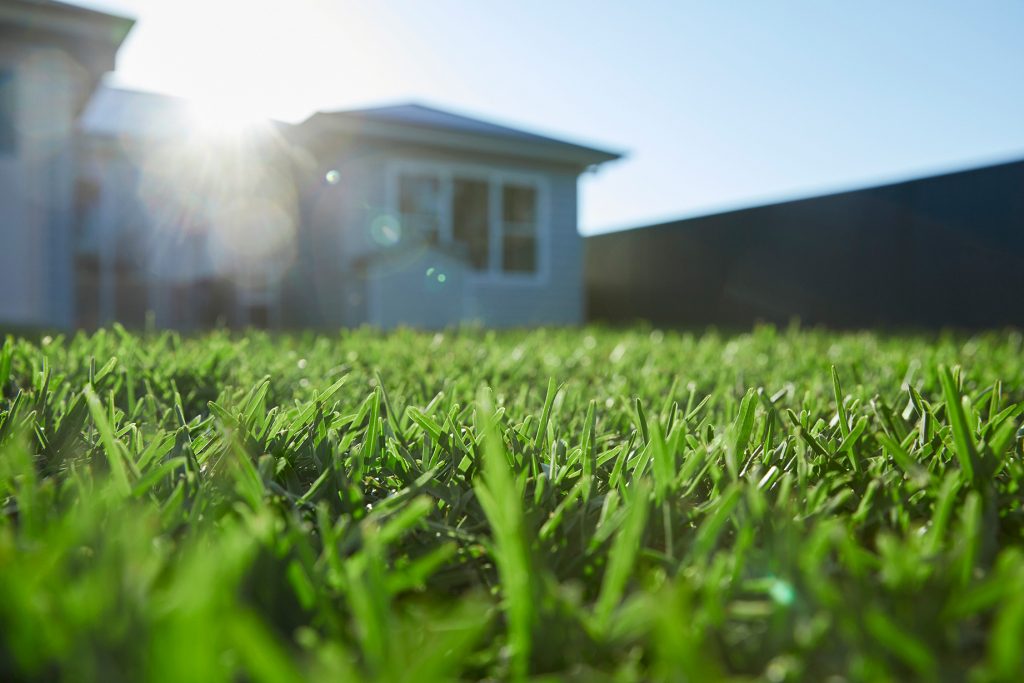 Always do your research first to find out what fertiliser is best for your lawn and ultimately that will lead you to the best quality fertiliser for your need.
Always do your research first to find out what fertiliser is best for your lawn and ultimately that will lead you to the best quality fertiliser for your need.
In the end, only you can choose the right fertiliser type for you and your lawn. Budget and the type of lawn will play a part in your fertiliser choice as well as the nutrient (NPK) needs of your lawn.
To find the best fertiliser – whether it be liquid or granular – you can browse a range of top lawn fertilisers at myhomeTURF’s online store. if you are unsure what fertiliser is right for you, read myhomeTURF’s Concise Lawn Fertiliser Guide.
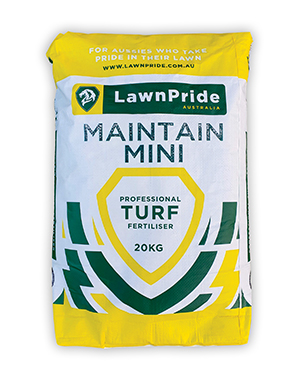
Lawn Pride Maintain Mini 26-2-9 + 3.4 Fe 20kg is one of the most popular granular all-round lawn fertilisers on the market with the active ingredients of Nitrogen (N – 26), Phosphorus (P – 2), Potassium(K – 9) and Iron (Fe – 3.4). Suitable for Zoysia, Kikuyu, Couch and Buffalo grasses. Always read the safety directions and instructions on the product label before use.
SHOP NOW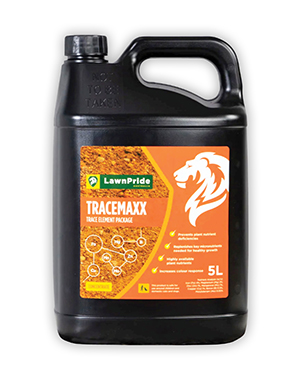
LawnPride TraceMaxx 5L Concentrate provides a complete package of the 9 essential Trace Element nutrients that aid in preventing plant nutrient deficiencies. Suitable for Zoysia, Kikuyu, Couch and Buffalo grasses. Always read the safety directions and instructions on the product label before use.
SHOP NOW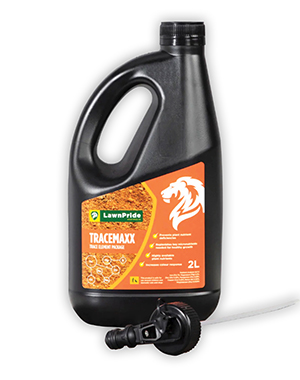
LawnPride TraceMaxx Hose-On 2L provides the complete package of the 9 essential Trace Element nutrients that aid in preventing plant nutrient deficiencies. It also replenishes key micronutrients that are needed to enhance lawn growth. Suitable for Zoysia, Kikuyu, Couch and Buffalo grasses. Always read the safety directions and instructions on the product label before use.
SHOP NOWSign up for our Newsletter to receive your free guide.
